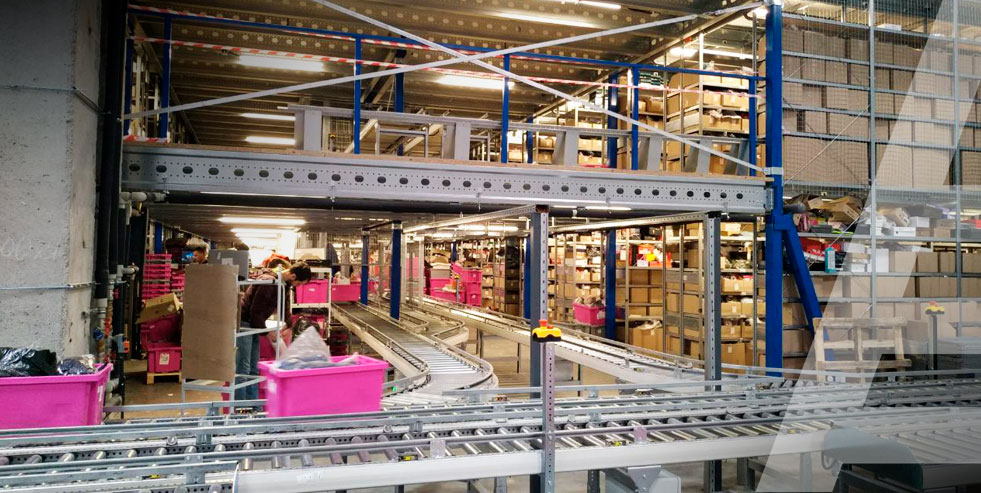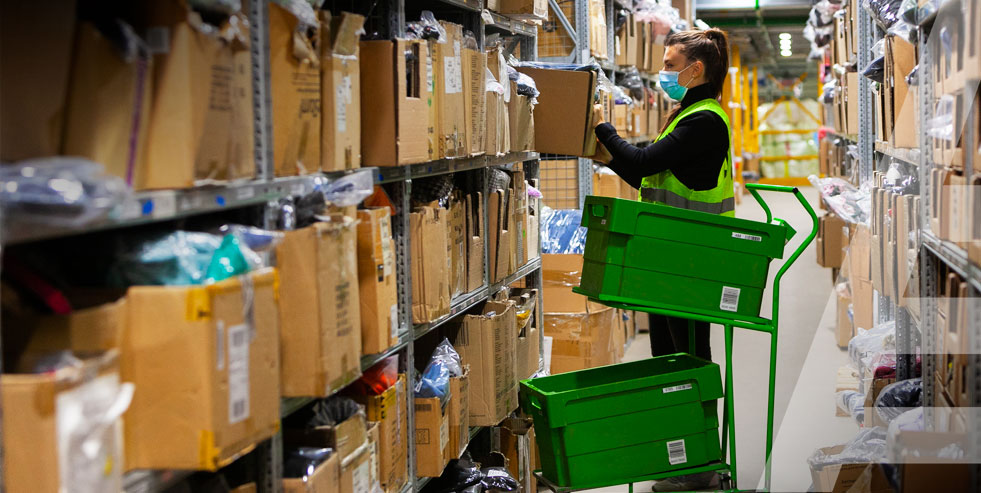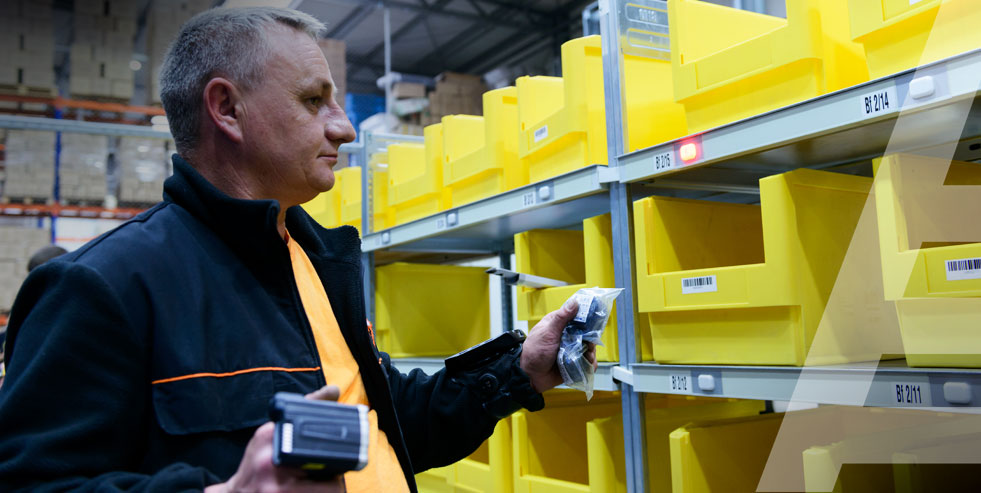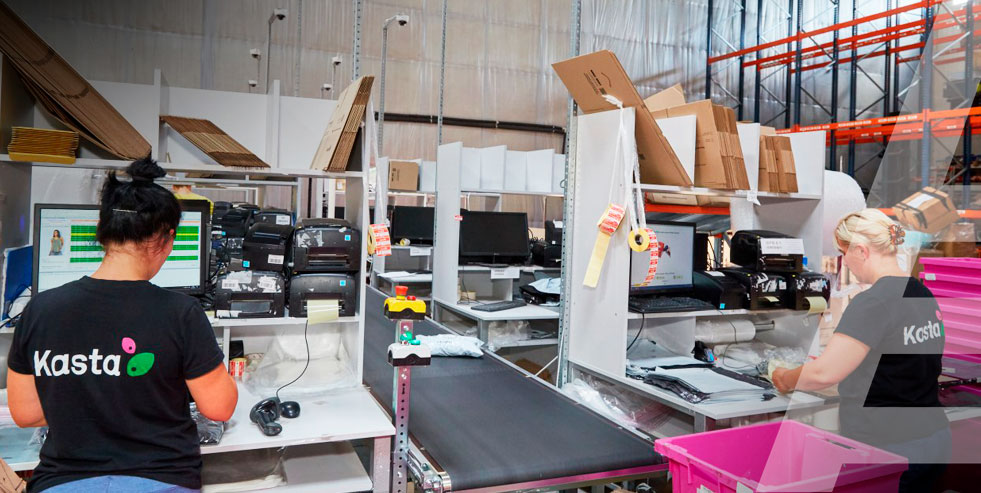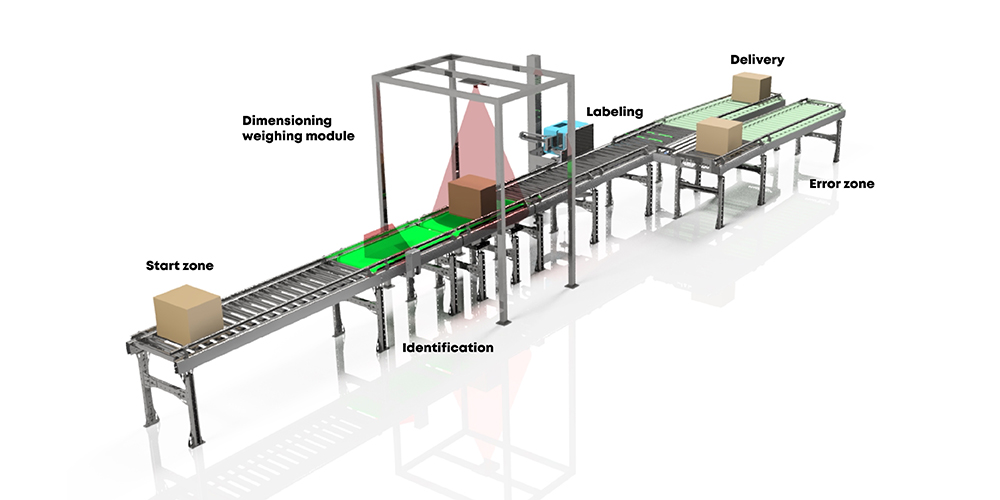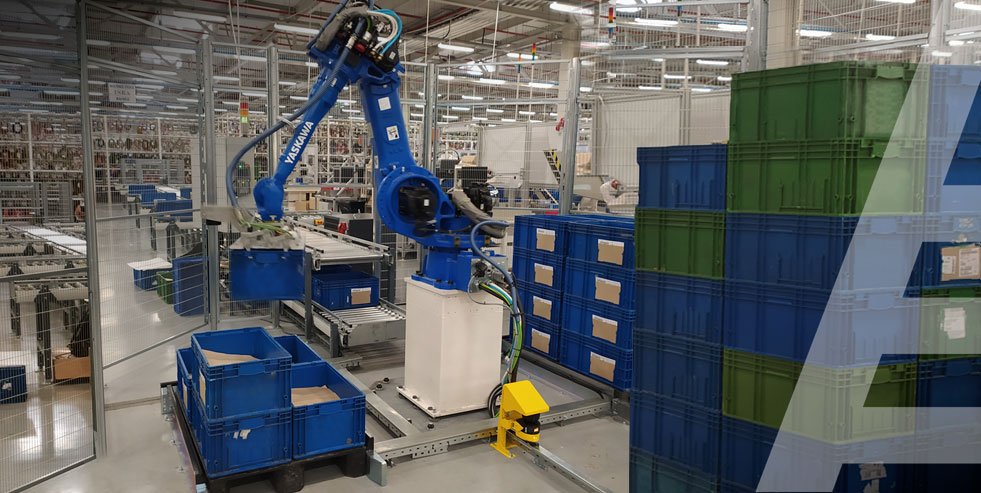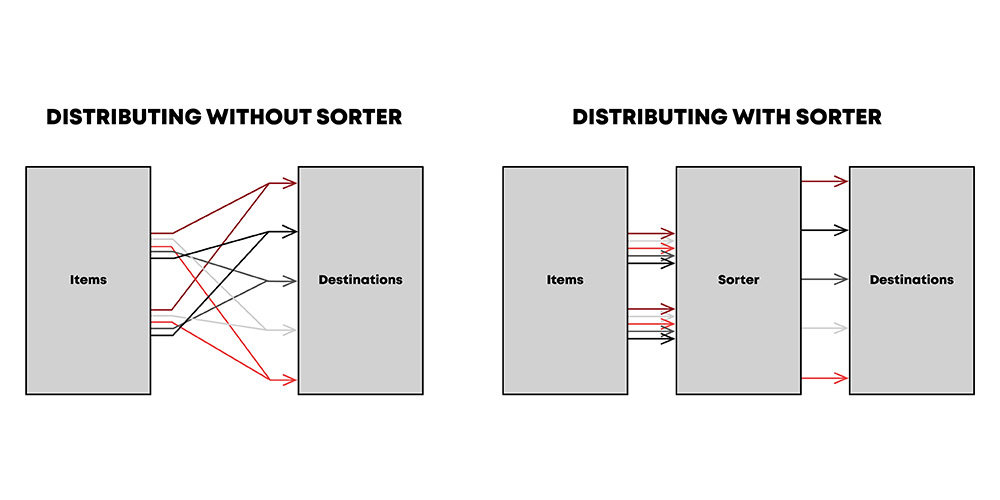The specifics of e-commerce warehouse automation

The 21st century is the era of technological progress and steady development of e-commerce. The Ukrainian e-commerce market grows by more than 30% every year. Nevertheless, the share of e-commerce in retail sales in Ukraine is only 3.2%, while the European average is 8.8% and 17.8% in the UK (source: https://rau.ua/novyni/vpliv-vijni-na-internet/).
However, an increase in online trade is predicted for the future. The increase in online retail presents retailers with new challenges, particularly in the area of supply chain management and warehouse logistics.
About 80% of customers do not order from a company again after a bad experience with it (source: https://www.meilirobots.com/resources-list/e-commerce-statistics). Key factors influencing consumers’ online shopping behavior include:
- speed of delivery;
- tracking of order status;
- ease of pickup;
- detailed information about the product;
- quality of the product (matching colors, etc.).
The most important features of e-commerce warehouses / online stores
The warehouse for online orders must be organized in such a way that employees can quickly process customer orders, combine them into a delivery route and ship them. Companies have a requirement that often no more than an hour should pass from the time the order arrives in the warehouse until it is shipped. Warehouse automation and logistics optimization are the tools to achieve this speed.
The most important aspects of warehouse logistics for the e-commerce segment are:
- a wide range of items (SKUs) – goods are stored on the shelves in clearly defined zones;
- a high speed of e-commerce operations – orders must be picked and shipped within hours or a day;
- a large number of recipients, most of whom are individuals who expect courier delivery to their doorstep (no pick-up stations).
KAPELOU develops warehouse automation projects taking into account all aspects. A comprehensive approach starts with the analysis of the business processes up to the manufacturing and installation of the equipment. In our projects we use racking systems, platforms and mezzanines, roller and belt conveyors, lifting devices, and perform integration with the warehouse management system. We calculate the performance of each module so that the warehouse or the individual area of the warehouse is used optimally.
The logistic strategy must include the tracking of each item in the supply chain from the manufacturer, through storage in the warehouse, to picking and delivery to the customer. The warehouse of e-commerce / online retailers is designed taking into account the most important aspects:
- for a large assortment, which can range from several thousand to millions of items, clearly defined storage locations with constant accessibility are required;
- the variety of sizes of goods, from jewelry to refrigerators, must be taken into account;
- storage time can range from a few hours to a few days or weeks before delivery to the customer;
- the storage conditions of the different goods must be considered: Electronics, clothing, cosmetics, food, building materials, etc.;
- fast delivery is a competitive advantage;
- there are many orders with a small number of items (SKU), a maximum of 2-3 in one order. It is difficult to determine the “core” of the assortment (the product that appears in most orders);
- a large part of online orders are orders consisting of a single item – about 40%;
- quality control in receiving and processing returns from customers.
Optimizing the storage space in an e-commerce warehouse
Increasing the storage area through higher storage density: the most common variant for equipping e-commerce warehouses is a mezzanine, which helps to increase the storage area. This solution does not require a large investment and allows you to use the warehouse space efficiently. Moreover, with the help of a mezzanine, you can expand the amount of assortment available for picking.
Shelf racks ensure the most compact storage possible. Each item is located in its own storage compartment and is always available for picking and shipping. At the same time, it is important to ensure the greatest possible stability of the structure with regard to possible loads.
For example, for the storage of more than 275,000 items at the largest online marketplace in Ukraine, we installed platforms and mezzanines with a total area of more than 30,000 m2. On multi-level metal structures, we have placed the storage and picking area in the form of shelving racks. The advantage of the racks is that they are modular. This allows them to be quickly added to or reconfigured as needed, ensuring maximum storage capacity.
Automated transport: each item in the storage area is checked before it is put into storage. Dimensions and barcodes are entered into the database.
The putaway process can be manual or automated: In the manual process, employees sort the goods into transport bins. The totes are then placed on a conveyor belt that takes them to the desired area of the warehouse for storage.
In the automated solution implemented by KAPELOU, the goods enter the warehouse from the vehicle on a telescopic conveyor, are read and directed to a specific location.
Picking procedures in e-commerce warehouses
When organizing effective logistics in an e-commerce warehouse, almost the most important thing is to develop the most optimal method for the picker to guide him through the picking process. Each picker picks goods in their own area. An efficient warehouse has a zone-oriented distribution of product storage among the shelves, so that as many goods ordered together as possible are stored in close proximity to each other.
During individual and collective picking, the employee covers several kilometers in the warehouse. For optimization and given a very large warehouse footprint, e-commerce picking is increasingly moving to batch picking.
Large e-commerce warehouses use combined picking methods. Orders are first collected in batches, then the batches are combined into groups. When the group is complete, the picker picks the goods in the group.
Conveyor systems are used to assemble the goods into different boxes in different areas of the warehouse. Employees then place the boxes on a conveyor belt, which is used to transport and collect them for picking and packing. In this way, order pickers need much less time to retrieve the goods from the warehouse and have more time for their actual tasks – picking and assembling orders.
When picking from the mezzanine floor in conjunction with the use of conveyor technology, labor productivity increases by at least 40%.
When all the goods from one area have been collected, they are grouped into batches and prepared for the next steps. The finished batches are transported to a mobile rack where the orders are collected and forwarded for packing and shipping.
The operations of picking and assembling into orders ready for shipment consist of several key processes:
- Creating and executing a “wave”: orders are grouped together and routed for picking.
- The sorting process: Goods are placed in storage bins in specific zones of the warehouse. The zoning avoids long distances between the individual groups of goods. Sorting by zones can be done for items from different orders and batches.
- Preparation: All items of the same batch are collected. Batches consist of several complete orders. When a batch is ready to be assembled, it is forwarded to a picking rack.
- Picking goods: The goods in an order are brought together in a shelf.
We offer two methods for processing waves of orders: The first is semi-automatic and based on pick-by-light technology. An illuminated button signals to the picker which shelf compartment to place the goods in.
With this paperless pick-by-light sortation technology introduced by KAPELOU, operators scan the goods. There are displays on the shelves that signal to the operator which shelf the goods must be placed in. This must be confirmed by pressing a button. The advantage of this technology is the ability to track picking at every stage. This ensures fast and accurate sorting of customer orders. The implementation of picking goods is possible both on fixed and mobile shelves.
The second method is automatic and is based on a buffer sequencer. This system consists of roller conveyors, vertical conveyors and sorting stations. The buffer sequencer is designed to accept boxes, sort them and store them temporarily in a multi-level conveyor. It can process up to 600 boxes per hour. The Buffer Sequencer is easily scalable as order volumes increase, reducing the number of employees involved in the picking process, ensuring time savings and efficient use of warehouse space.
The buffer sequencer implements “goods to person” technology. The main advantage of this approach: the operator’s path is shortened, which means significant time savings. Employees remain in their assigned locations and goods are transported to the picking station via a conveyor. The system helps increase picking productivity, eliminate picking errors and reduce picking operating costs.
The packing area in an e-commerce warehouse and its specifics
As a rule of thumb, the packing area should be as close as possible to the goods issue area. The operator scans all items and packs them into shipping cartons (cardboard boxes, bags, etc.). Cardboard boxes are a popular material for external protection of products because they are strong, lightweight and recyclable. They can be easily printed with information and tagged with barcodes and RFID tags. Each package is labeled with a unique barcode. The operator then places the package on a pallet, shelf or conveyor, which routes the packaged orders to the appropriate locations for shipment.
Automation also lends itself to the packaging area. KAPELOU uses SLAM technology (Scan, Labe, Apply, Manifest) for this purpose.
It consists of the following elements:
- Machine Vision – Scans the barcode of each package to identify it.
- Weight measurement module – Each package is weighed during transport on the conveyor system, then the transport weight is entered into the database before shipment.
- Measuring module – Records the dimensions (length, width, height) of each package using a special optical system.
- Labeling – Each package is automatically provided with a shipping label that serves as an identifier when the package is delivered to the end customer.
The packaging and palletizing process can be fully automated using an industrial robot and automated systems.
E-commerce in the warehouse. Order sortation by destination
Sorting systems are used for distribution to specific destinations – by store, department, transport route. They allow you to significantly increase labor productivity. Packaged orders are sorted by shipping direction so that they can be delivered to end customers as accurately and quickly as possible. Sorting systems are used to distribute goods of the same size as well as different sizes and weights.
Depending on the required throughput, KAPELOU uses sorting systems based on reject modules or more complex automated sorting systems: cross belt sorter, push tray sorter, shoe sorter and others.
For example, for the cosmetics chain Prostor (case) we have set up a system for simultaneous sorting of plastic containers in 22 different directions. For this purpose, we installed switches for automated sortation, so that the customer’s warehouse could supply more than 20 stores per hour. And for Watsons (case), the largest international retailer of health and beauty products, we installed an OptiSorter with 22 sorting channels that can process up to 6,000 boxes per hour.
For each individual operation, KAPELOU selects an individual sorting solution, depending on product type, sorting capacity, number of sorting channels, etc.
Exchange and return process in e-commerce (complaint)
The most common reasons for returns in the e-commerce sector are damage, wrong recipient and discrepancies between the actual product and its description. A flexible and transparent return process helps to increase consumer confidence. In addition, 95% of shoppers believe that a well-organized return process can influence their decision to become a repeat customer (Voxware study, source: https://www.businesswire.com/news/home/20181218005088/en).
Today’s e-commerce warehouses use automated solutions to photograph returns and monitor their quality. In complex projects, KAPELOU uses automated photo scanners to scan barcodes and machine vision to capture images of goods and record their quality status. The information about each item is sent to the WMS, with the subsequent possibility of creating return slips, sending the necessary visual information to the control service, etc.
The development of the WMS and automation system allows maximum throughput and efficient use of material and human resources. KAPELOU has experience in integrating plants with WMS of various manufacturers – Manhattan, Qguar, Infor EXceed, 1C, Solvo, as well as in-house developments of companies, so we know all the specifics.
During our 9 years of experience we have implemented a number of solutions in the field of warehouse logistics for top clients of e-commerce sector in Ukraine and Europe. Based on the client’s needs, we implement comprehensive automation systems with any level of complexity. Automation of warehouses for e-commerce helps companies increase customer satisfaction by delivering goods quickly and providing a straightforward return process. All this gives you a competitive advantage that allows you to stand out, be a reliable partner in the eyes of customers and lead the e-commerce market.
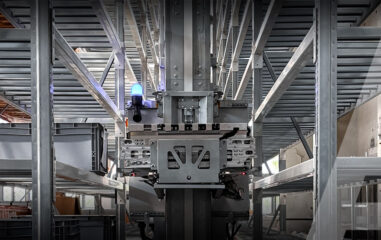
Today, warehouse efficiency is measured in seconds, not hours. Modern warehouses are no longer just spaces packed with racks – they’re dynami...
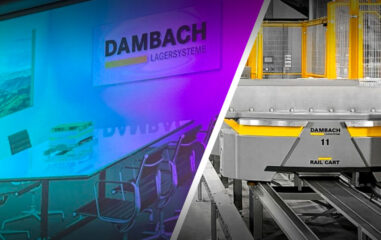
On August 19-20, 2025, our engineering team completed training at Dambach Lagersysteme (Germany), a manufacturer of storage and retrieval equipment...
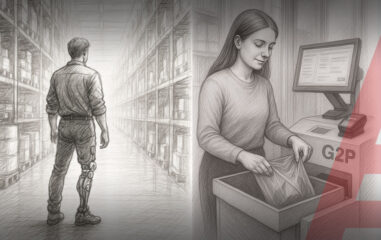
In recent years, the warehouse has evolved far beyond being just a place to store goods. It is now a dynamic, technology-driven environment –...
 Close
Close
 Back
Back


 Close
Close